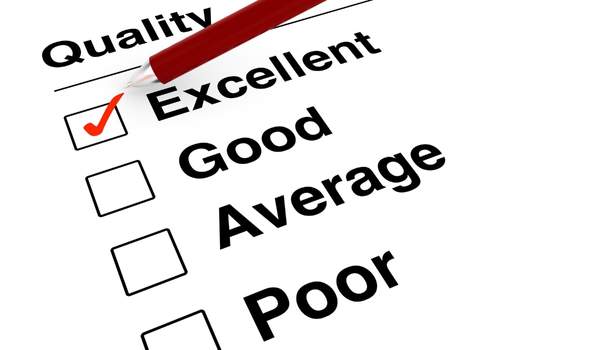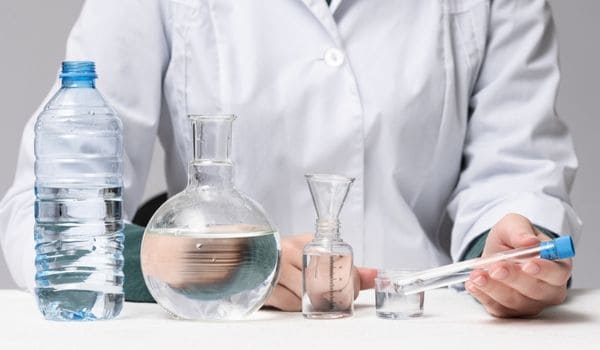Most of us trust our tap water — especially if it’s city-treated. But if you’ve ever gotten a boil advisory, use a private well, or wondered what’s actually lurking in your pipes… bacteria might be closer than you think.
That’s where reverse osmosis (RO) comes in. This ultra-fine filtration method is often praised for removing: lead, fluoride, and other troublemakers. But what about bacteria?
Let’s break it down — and see if RO is the bacteria-busting backup your home needs.
✅ Quick Takeaways
- 🦠 Yes, reverse osmosis can remove bacteria — including E. coli and Salmonella
- 🧪 It uses a semi-permeable membrane that traps contaminants down to 0.0001 microns
- 💡 Most RO systems also include carbon prefilters for added protection
- 🚰 It’s ideal for homes with private wells, low-chlorine water, or outdated plumbing
- 🔧 Maintenance matters — a neglected system won’t keep you safe
🦠 Why Bacteria Still Matters in Tap Water

We don’t think much about microbes in our water — until a boil notice hits or someone gets sick. But even in developed countries, waterborne bacteria are still a real risk.
According to the CDC, millions of Americans get sick every year from waterborne illnesses — and not just from traveling. Flooding, outdated infrastructure, and untreated wells — all leave the door open for bacterial contamination.
Common culprits include:
- 🚨 E. coli and Salmonella
- 🧫 Coliforms from soil or animal waste
- 🌧️ Runoff after heavy rain or septic failure
- 🏚️ Private wells with no disinfection system
Wells are especially vulnerable — and yet up to 40% of private wells may contain bacteria, many without the owners even knowing.
💡 How Reverse Osmosis Filters Actually Work

Think of reverse osmosis (RO) as a superfine strainer for your water. It works by: forcing water through a special membrane with microscopic pores — small enough to block bacteria, lead, and even fluoride.
But RO systems don’t work alone. Most are multi-stage filters, combining:
- 🧱 A sediment prefilter – catches dirt, rust, and larger particles
- 🌿 A carbon prefilter – absorbs chlorine and chemicals that can damage the membrane
- 🧪 The RO membrane – traps bacteria, metals, and contaminants at the molecular level
- 🚰 A storage tank – holds clean water for drinking and cooking
Water flows in → contaminants are separated → clean water is stored → waste water goes down the drain.
Some models also include a booster pump to keep things moving if your home’s water pressure is low (common with wells or older plumbing).
🧫 Can RO Remove Bacteria?
Short answer? Yes — and impressively well.
RO membranes are engineered with tiny pores, usually around 0.0001 microns. For comparison:
- 🦠 Most bacteria = 0.2 to 10 microns
- 💧 RO membrane pores = 0.0001 microns
That means most bacteria simply can’t fit through — they get trapped and flushed away with the wastewater.
📌 Examples of bacteria removed by RO systems:
- E. coli
- Salmonella
- Campylobacter
- Coliforms (often a sign of contamination)
Some high-end systems also block protozoa and viruses, depending on the pore size and supporting filters. Still, if you need 100% certainty (especially with well water), pairing RO with a UV filter offers an added layer of protection by neutralizing any stragglers.
💥 RO Removes More Than Just Bacteria

Reverse osmosis systems don’t just stop at microbes.
Thanks to their multi-stage setup — typically including carbon filters, sediment filters, and the RO membrane — they can take down a broad range of contaminants.
Here’s a look at what a well-built system can handle:
| 🧪 Contaminant Type | 🧯 Common Examples |
|---|---|
| Disinfectants | Chlorine, Chloramines |
| Heavy Metals | Lead, Arsenic, Chromium, Copper |
| Organics | Pesticides, Herbicides, VOCs |
| Microbes | E. coli, Salmonella, Giardia |
| Emerging Contaminants | PFAS, Pharmaceuticals, Microplastics |
| Dissolved Solids | Fluoride, Nitrates, Sodium |
💡 Good to know: RO membranes can’t do everything on their own — but when paired with carbon filters and sediment prefilters, they cover almost all the bases for safe, clean water.
🏠 RO vs. Whole-House Filters: What’s the Difference?

Not all water filters are built for the same job. Whole-house systems treat all the water coming into your home, while reverse osmosis systems focus on the tap you drink from. So, which one makes more sense when bacteria (and other nasties) are the concern?
Let’s break it down 👇
| ⚖️ Feature | 🏠 Whole-House System | 🚰 Reverse Osmosis |
|---|---|---|
| 🎯 Target Use | Filters all water entering your home | Filters drinking/cooking water only |
| 🦠 Bacteria Removal | Not typically designed to remove microbes | Excellent at reducing bacteria with membrane & prefilters |
| 🚿 Showers & Faucets | Softens or conditions water throughout the home | Filtered water only at one tap |
| 🔩 Installation | Professional install recommended | DIY-friendly; fits under the sink |
| 💰 Cost | More expensive upfront | More affordable for drinking water only |
If your home has older plumbing, the real risk isn’t what’s in your city’s supply — it’s what happens to the water after it passes through your pipes. That’s where a point-of-use RO filter has the edge: it catches what whole-house systems might miss right before it hits your glass.
⚖️ Reverse Osmosis: Pros & Cons at a Glance

RO filters are powerhouse purifiers — but they’re not perfect for every household. Here’s what to weigh before making the switch:
| ✅ Pros | ⚠️ Cons |
|---|---|
| Removes bacteria, viruses, heavy metals, and other contaminants | Wastes 2–3 gallons of water for every gallon filtered |
| Improves taste by stripping chlorine & sediment | Removes healthy minerals (water may taste “flat”) |
| Compact design fits easily under the sink | Only filters water at one faucet unless customized |
| Affordable compared to bottled water or whole-home setups | Upfront cost is higher than carbon-only filters |
| Easy to maintain with simple cartridge replacements | May need a pump if your home has low water pressure |
Bottom line? If your biggest concern is bacteria or other biological contaminants, RO filters are one of the best options available — especially when combined with a UV filter for extra peace of mind.
🧪 Testing Your Water

Bacteria can sneak into your water supply without warning — it’s colorless, tasteless, and invisible to the naked eye. So how do you know if it’s there?
If you’re on city water, your local utility does routine testing. But here’s the catch — they typically only test a small sample of homes. Yours might not be one of them.
And if you’re on a private well, you’re fully responsible for testing. According to the CDC, private wells are more vulnerable to contamination — and up to 40% may be affected by bacteria at any given time.
💡 Smart Tip: For real peace of mind, consider sending a sample to a certified lab like SimpleLab. Their Tap Score kit is easy to use, affordable, and gives you a detailed report — including whether your water’s hiding something nasty like E. coli or coliforms.
🛡️ Want Extra Protection? Pair It with UV
Reverse osmosis does a solid job reducing bacteria — but for full-spectrum protection, many pros recommend adding a UV filter.
💡 Why UV? Instead of removing bacteria, ultraviolet light neutralizes it — zapping the DNA so microbes can’t reproduce or make you sick. It’s chemical-free, fast, and incredibly effective when paired with an RO system.
Here’s how they work together:
- RO filter removes sediment, chlorine, and most bacteria
- UV filter steps in as the final line of defense — ideal for well water or boil-order zones
- Together, they create a nearly foolproof purification setup 💥
If your water is biologically questionable — especially if you’re on a well or worried about power outages affecting treatment plants — this combo is worth considering.
🧠 Final Thoughts
So… does reverse osmosis remove bacteria?
Yes — and then some. When paired with prefilters (and optionally UV), RO systems offer some of the best protection you can get at home.
They’re compact, efficient — especially useful if you’re on a well or live in an area with frequent boil orders. Just remember: 🧽 maintenance matters. Even the best filter won’t help if you forget to change the cartridges.
Clean water shouldn’t be a gamble. With the right system in place — and a little upkeep — you can sip safely knowing what isn’t in your glass. 💧✨
 147 people found this helpful. Was this guide helpful to you?
147 people found this helpful. Was this guide helpful to you? 

